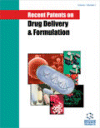-
s Next Steps in 3D Printing of Fast Dissolving Oral Films for Commercial Production
- Source: Recent Patents on Drug Delivery & Formulation, Volume 14, Issue 1, Mar 2020, p. 5 - 20
-
- 01 Mar 2020
Abstract
3D printing technique has been utilised to develop novel and complex drug delivery systems that are almost impossible to produce by employing conventional formulation techniques. For example, this technique may be employed to produce tablets or Fast Dissolving oral Films (FDFs) with multilayers of active ingredients, which are personalised to patient’s needs. In this article, we compared the production of FDFs by 3D printing to conventional methods such as solvent casting. Then, we evaluated the need for novel methods of producing fast dissolving oral films, and why 3D printing may be able to meet the shortfalls of FDF production. The challenges of producing 3D printed FDFs are identified at commercial scale by referring to the identification of suitable materials, hardware, qualitycontrol tests and Process Analytical Technology. In this paper, we discuss that the FDF market will grow to more than $1.3 billion per annum in the next few years and 3D printing of FDFs may share part of this market. Although companies are continuing to invest in technologies, which provide alternatives to standard drug delivery systems, the market for thin-film products is already well established. Market entry for a new technology such as 3D printing of FDFs will, therefore, be hard, unless, this technology proves to be a game changer. A few approaches are suggested in this paper.


